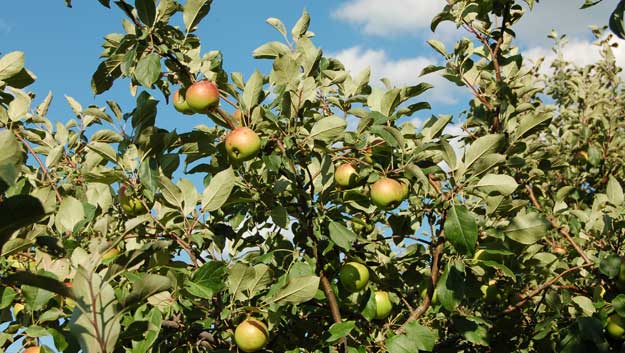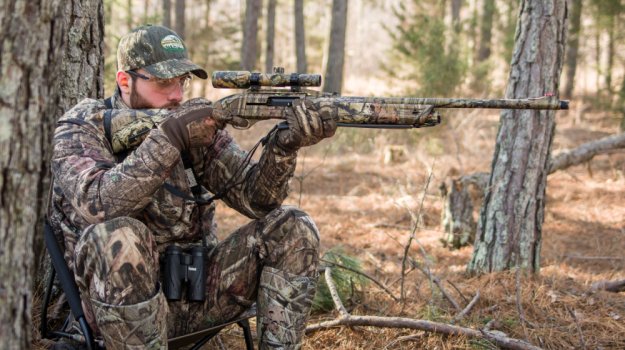
Whether it’s persimmon, cherry, crabapple, white or red oak acorns, or you’re lucky enough to have chestnuts, it’s amazing the yield of wildlife food you can coax out of your native habitat. Without ever planting a food plot, and by spending very little, you can entice your native trees into producing tons of forage for your wildlife simply with a chainsaw, pruner and a little fertilizer.
Give them a chance. If you have mast producing trees on your property, whether soft mast like apples or pears or hard mast like beech nuts or acorns, release these trees. That simply means eliminate the competition. From the tree trunk out to a bit beyond the drip-line, remove all potential competition for moisture and nutrients from the tree you want to produce. Larger unwanted trees can be taken out with a “hack-n-squirt” herbicide application to reduce work load.
A little off the side please. Pruning applies more to soft mast trees like crabapple, pear and apple, but it can help increase yield by reducing insect infestations, crowded growing conditions and disease. If you don’t prune, thick foliage at the top of the tree can shade lower parts of the tree inhibiting fruit production. This can eventually limit fruit generation only to the tips of the highest branches that receive sunlight. Pruning helps trees to remain disease-free, produce larger fruit and develop structural support for producing more fruit.
It’s best to begin pruning when you first plant the tree, then it’s easy to shape and control. If you have a tree that has been neglected for years, tackle the job in stages. Remove dead branches, suckers and water sprouts during the first year. Next year, cut away branches that cross one another and inward-pointing branches. Remove selected top and outer branches to let in some light. Shape the tree from the trunk outward and from the bottom up. Try to keep the center open so air can flow through. The third year should just require a little shaping and clean-up, but fruit production should be restored.
How long can you go without food? Fertilize your trees. Mast producing trees, no matter how old, react positively to a fertilizer application. 5-10-15 is a good all around tree fertilizer, but in absence of this, plain old 10-10-10 can be used. BioLogic produces Tree Paks that make fertilizing trees easy. These small “tea-bag” style pouches are biodegradable and effortless to employ. Simply walk around the drip-line of the tree dropping pouches as you go. The amount of Tree Paks per tree is determined by the tree’s diameter at your chest height. Even browse species can be compelled into producing tons more food per acre by giving them some fertilizer.
This tip is courtesy of the GameKeepers Field Notes, a weekly wildlife and land management email newsletter produced by the Mossy Oak GameKeepers.
A GameKeeper by definition is someone who truly loves AND lives the land, the critters and nature…not just during hunting season but all the time. A GameKeeper wants to be outdoors every day and work the dirt while living their personal “obsession”.
Find out more about what makes a GameKeeper by visiting our website.




























